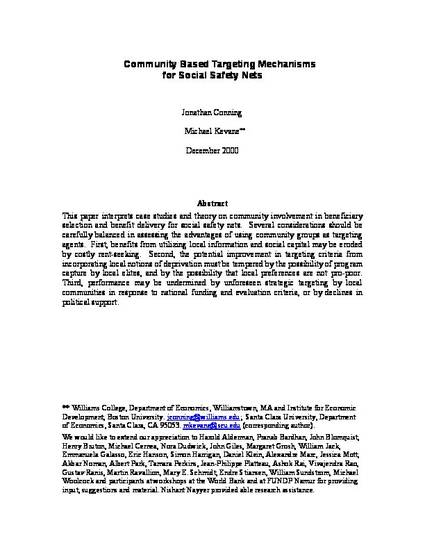
This paper interprets case studies and theory on community involvement in beneficiary selection and benefit delivery for social safety nets. Several considerations should be carefully balanced in assessing the advantages of using community groups as targeting agents. First, gains from utilizing local information and social capital may be eroded by costly rent-seeking. Second, the potential improvement in targeting criteria from incorporating local notions of deprivation must be tempered by the possibility of program capture by local elites, and by the possibility that local preferences are not pro-poor. Third, intended outcomes may be undermined by unforeseen strategic targeting by local communities in response to national funding and evaluation criteria, or by declines in political support.

© 2002. This manuscript version is made available under the CC-BY-NC-ND 4.0 license http://creativecommons.org/licenses/by-nc-nd/4.0/.